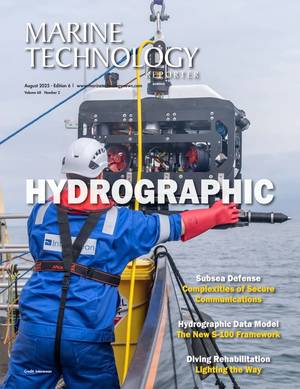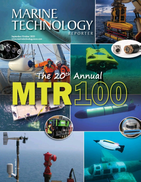
Microscopic Wave Machine Mimics Ocean Waves
to hundreds of metres long to study shallow-water dynamics such as tsunamis and rogue waves,” Bowen said. “But these facilities only reach a fraction of the complexity of waves found in nature.“Turbulence and nonlinear wave motion shape the weather, climate, and even the efficiency of clean-energy technologies like wind farms. Our miniature device amplifies the nonlinearities that drive these complex behaviours by more than 100,000 times. Being able to study these effects at chip scale – with quantum-level precision – could transform how we understand and model them.&rdquo
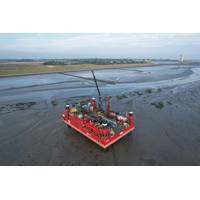
Fugro Concludes Site Investigations for TenneT’s Offshore Grid Links
(TSO) TenneT Germany, to support the development of the LanWin1 and LanWin2 offshore grid connection projects.These projects are part of TenneT Germany’s 2 GW program, a major initiative that aims to connect at least 14 offshore connection systems to the onshore electricity grid, delivering clean energy to up to 35 million European households.The LanWin2 cable route required a range of onshore and nearshore investigation activities to support project development. Fugro’s new GroundIQ service enabled low-impact geophysical surveys, including electrical resistivity profiling and patented
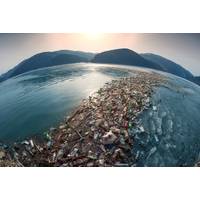
India and EU Launch Ideathon on Marine Plastic Litter
; has been formally launched.The initiative is being organized by the Office of the Principal Scientific Adviser (PSA) to the Government of India in partnership with the Delegation of the European Union to India, with the support of the India-EU Trade and Technology Council Working Group 2 on Green and Clean Energy Technologies.Mentors from India and the European Union have outlined three challenges:• identifying and tracking marine plastics to develop innovative approaches for detecting and monitoring their movement across coastal and ocean ecosystems,• developing technologies and scalable solutions

Massachusetts Clean Energy Center Awards $11.3 Million to Advance Ocean Technology Innovation
The Massachusetts Clean Energy Center (MassCEC) announced over $11 million in funding for seven organizations through its new Ocean Innovation Network. The program will further position Massachusetts as a leader in ocean technology, accelerating the development of new solutions while fostering connections among marine science and technology businesses, particularly on the South Coast, Cape Cod, and the North Shore.The announcement took place at New Bedford Research and Robotics during the Southeast stop of MassCEC’s Climatetech Corridor Roadshow, following morning sessions at UMass Dartmouth. Dr.
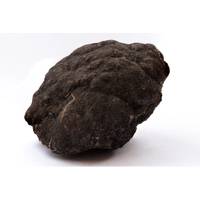
India Signs Deepsea Mining Exploration Deal with International Seabed Authority
Seabed Authority for exclusive rights to explore polymetallic sulphides in the Indian Ocean, the government said on Saturday.Polymetallic sulphides, which form around hydrothermal vents on the seafloor, contain high concentrations of metals such as copper, zinc, gold and silver - essential for clean energy technologies, electronics, and other high-tech applications.India is the first country to hold two ISA contracts for polymetallic sulphides. An earlier agreement with the United Nations body, which regulates mineral exploration and exploitation in international seabed areas, covered the Central
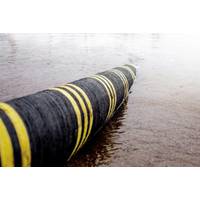
NKT Emerges as Preferred Bidder for UK HVDC Interconnector
.The announcement was made by SSEN Transmission and National Grid Electricity Transmission, joint venture partners developing the 680-kilometer subsea and onshore cable link. The project is designed to strengthen Britain’s electricity backbone, boost system resilience, and help deliver more clean energy across the country.EGL3 is part of a broader UK investment program aimed at expanding the transmission grid to accommodate the country’s growing renewable power capacity.The parties will now move into negotiations with the aim of signing a final contract.“We are honored to be selected

Eco Wave Power Launches First-Ever US Wave Energy Plant
, reliable, and available right here on our coastlines. With projects like this, we are proving that wave energy is not just the future - it is here, now. So, let's celebrate this milestone together. Because today, we are not just cutting a ribbon - we are opening the door to a new era of clean energy for California and for the world,” said Inna Braverman, Founder and CEO of Eco Wave Power.The launch comes at a pivotal time for California, aligning with the state's bold climate policies and Senate Bill 605, which calls for the creation of a comprehensive wave energy roadmap.Federal
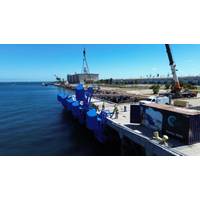
Eco Wave Power Concludes Operational Testing of US Pilot Wave Plant
completed, Eco Wave Power has now officially entered the operational phase of its U.S. journey."Seeing our floaters lowered into the water for the first time, and having it shared live on Good Morning America, is a moment of great pride, not only for Eco Wave Power but for the future of clean energy innovation"This pilot station is a vital step in demonstrating how wave energy can be harnessed using existing marine infrastructure, while laying the groundwork for full-scale commercialization in the United States,” said Inna Braverman, Founder and CEO of Eco Wave Power.The Los Angeles
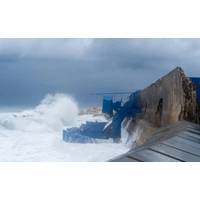
Eco Wave Power Eyes South Africa for Wave Energy Plant
a meaningful step toward addressing energy access and sustainability in Africa, while advancing our global mission to commercialize wave energy technology,” said Inna Braverman, Founder and CEO of Eco Wave Power."This collaboration represents an important opportunity to support Africa's clean energy transition. Wave energy has the potential to play a key role in delivering sustainable, reliable power to underserved communities and industries,” added Wilfred Emmanuel-Gottlieb, CEO of AGFDL

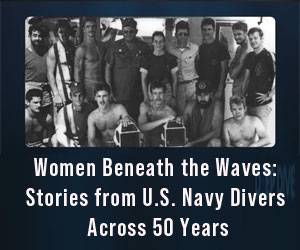
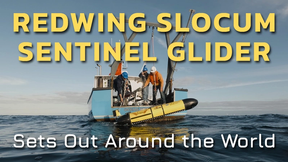
 August 2025
August 2025
